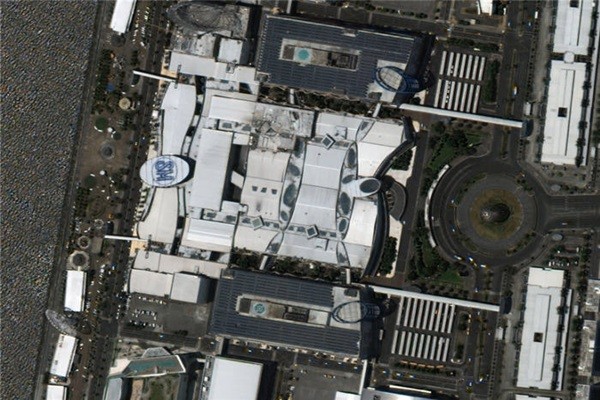South Korea is going to export its first high-resolution direct broadcast satellite images that are going to be worth about $6 million.
Ministry of Science and ICT (MSIT) made an announcement on the 20th that a national satellite image sales agency called SIIS (Satrec Initiative Imaging Service) signed a contract with Philippines and India regarding exportation of multipurpose and practical satellite images through direct broadcast. This will be the first exportation of direct broadcast satellite images from multipurpose and practical satellites No. 3, No. 3A, and No. 5 made by South Korea.
SIIS is going to provide images from satellites No. 3 and No. 5 to ASTI (The Advanced Science and Technology Institute) in Philippines and receive about 1 million pesos (2.1 billion KRW) in return for a year. It is going to provide images from satellites No. 3 and No. 3A to NRSC (National Remote Sensing Centre) in India and receive about $4 million (4.3 billion KRW) in return for two years.
This contract with Philippines is the follow-up contract to the one in2015. At that time, South Korea exported satellite transmitting antennas and processing systems worth $3 million to Philippines. For the next year, Philippines will receive satellite images through South Korean equipment.
Multipurpose satellites No. 3 (optical) and No. 5 (radar) will directly send images that they took over Philippines. As weather in Philippines is mostly cloudy due to it being a tropical country, number of demands for images from radars that can take pictures in daytime and nighttime and all weather is very high. Philippines is planning to use these images for understanding damages done by flood and managing the country.

For India, South Korea is going to provide images from satellite No. 3 and No. 3A for the next two years through virtual direct broadcast method. South Korea’s Korea Aerospace Research Institute (KARI) will send original images of India to India in real-time. India will be able to receive such direct broadcast images without satellite antennas.
KARI and SIIS have been supporting India since 2013 and they have let India know about South Korea’s excellence in satellite technologies and prepared foundation for exportation. They were able to beat out top companies in China, Canada, U.S., and France in December of 2016 and were selected as primary negotiators. They were able to sign off on a final contract and they will be providing satellite images to India staring from this year.
This is the first time when South Korea will be exporting its high-resolution satellite images through direct broadcast method. In 2018, it exported low-resolution satellite images. Multipurpose satellites No. 3, No. 3A, and No. 5 have greatly improved their resolution by having 0.7m, 0.55m, and 1.0m respectively.
South Korea has been improving its international superiority in satellite fields such as by being the second country in the world to enter markets for super-high-resolution satellite images under 0.5m resolution in July of 2016. MSIT is expecting that these contracts will solidify position of South Korean technologies in global markets.
It is estimated that markets for satellite data from observation of the earth are expected to be worth $3 billion in 2026 after being worth $1.8 billion in 2016 due to increase in number of demands from local security and coast, infrastructure, and resource monitoring fields. MSIT is going to form an environment for exportation such as by predicting number of demands from promising countries such as Central Asia, South-East Asia, Africa, and South America.
“Fact that we signed off on contracts with Philippines and India proves that our satellite technology has been recognized by the world.” said Director General Choi Won-ho of MSIT’s Macro Public Research Policy Department. “We are going to support Industry 4.0 through development of aerospace industries and work so that they become foundations for innovative growth.”
Staff Reporter Song, Junyoung | songjy@etnews.com